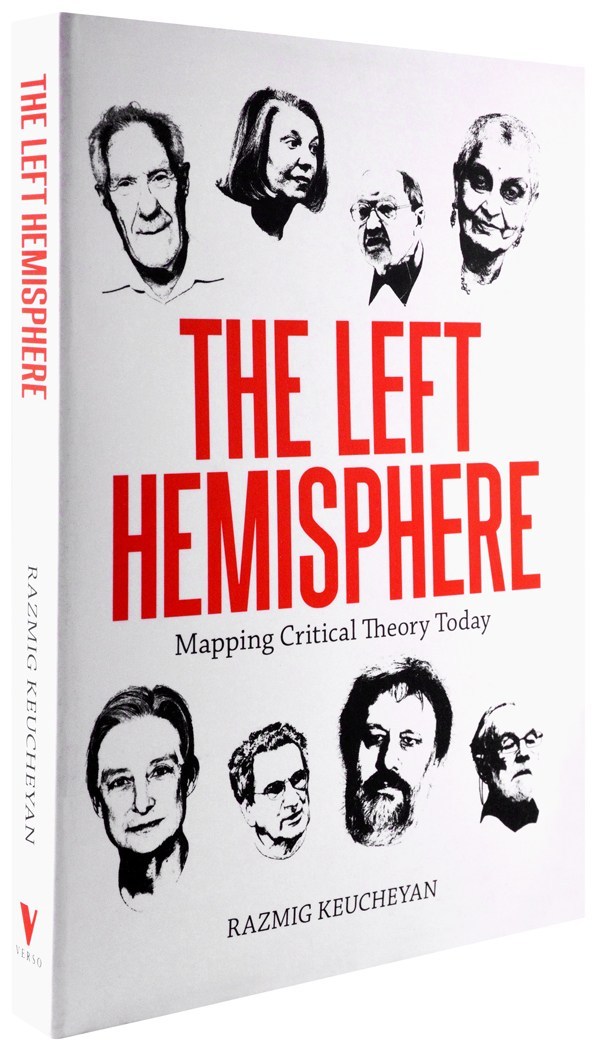Difference between revisions of "Books/Slavoj Zizek/The Left Hemisphere Mapping Critical Theory Today"
< Books | Slavoj Zizek
(importing zizek books test) |
|||
| Line 1: | Line 1: | ||
=‘The Left Hemisphere: Mapping Critical Theory Today’ by Razmig Keucheyan= | =‘The Left Hemisphere: Mapping Critical Theory Today’ by Razmig Keucheyan= | ||
<div class="entry-content"> | <div class="entry-content"> | ||
| − | [[Image: | + | [[Image:The-left-hemisphere-theoryleaks.jpg|frame|right|300px]] |
| − | |||
| − | '''A panoramic account of the world’s leading writers and thinkers'''As the crisis of capitalism unfolds, the need for alternatives is felt ever more intensely. The struggle between radical movements and the forces of reaction will be merciless. A crucial battlefield, where the outcome of the crisis will in part be decided, is that of theory.Over the last twenty-five years, radical intellectuals across the world have produced important and innovative ideas. The endeavour to transform the world without falling into the catastrophic traps of the past has been a common element uniting these new approaches.This book—aimed at both the general reader and the specialist—offers the first global cartography of the expanding intellectual field of critical contemporary thought. More than thirty authors and intellectual currents of every continent are presented in a clear and succinct manner. A history of critical thought in the twentieth and twenty-first centuries is also provided, helping situate current thinkers in a broader historical and sociological perspective.</div> | + | {{Center|'''<big>[https://mega.nz/#!wuBUBC6I!2Zww1lUzpp1KZzYw8VHwS9gEzNclWC7KcYX4PlLdhTE DOWNLOAD]</big>'''}} |
| + | '''A panoramic account of the world’s leading writers and thinkers'''As the crisis of [[capitalism]] unfolds, the [[need]] for alternatives is felt ever more intensely. The [[struggle]] between radical movements and the forces of reaction will be merciless. A crucial battlefield, where the outcome of the crisis will in part be decided, is that of [[theory]].Over the last twenty-five years, radical intellectuals across the [[world]] have produced important and innovative [[ideas]]. The endeavour to transform the world without falling into the catastrophic traps of the [[past]] has been a common element uniting these new approaches.This book—aimed at both the general reader and the specialist—offers the first [[global]] cartography of the expanding [[intellectual]] field of critical contemporary [[thought]]. More than thirty authors and intellectual currents of every continent are presented in a clear and succinct manner. A [[history]] of critical thought in the twentieth and twenty-first centuries is also provided, helping situate current thinkers in a broader historical and sociological perspective.</div> | ||
[[Category:Books]] | [[Category:Books]] | ||
Latest revision as of 14:04, 30 June 2019
‘The Left Hemisphere: Mapping Critical Theory Today’ by Razmig Keucheyan
A panoramic account of the world’s leading writers and thinkersAs the crisis of capitalism unfolds, the need for alternatives is felt ever more intensely. The struggle between radical movements and the forces of reaction will be merciless. A crucial battlefield, where the outcome of the crisis will in part be decided, is that of theory.Over the last twenty-five years, radical intellectuals across the world have produced important and innovative ideas. The endeavour to transform the world without falling into the catastrophic traps of the past has been a common element uniting these new approaches.This book—aimed at both the general reader and the specialist—offers the first global cartography of the expanding intellectual field of critical contemporary thought. More than thirty authors and intellectual currents of every continent are presented in a clear and succinct manner. A history of critical thought in the twentieth and twenty-first centuries is also provided, helping situate current thinkers in a broader historical and sociological perspective.
